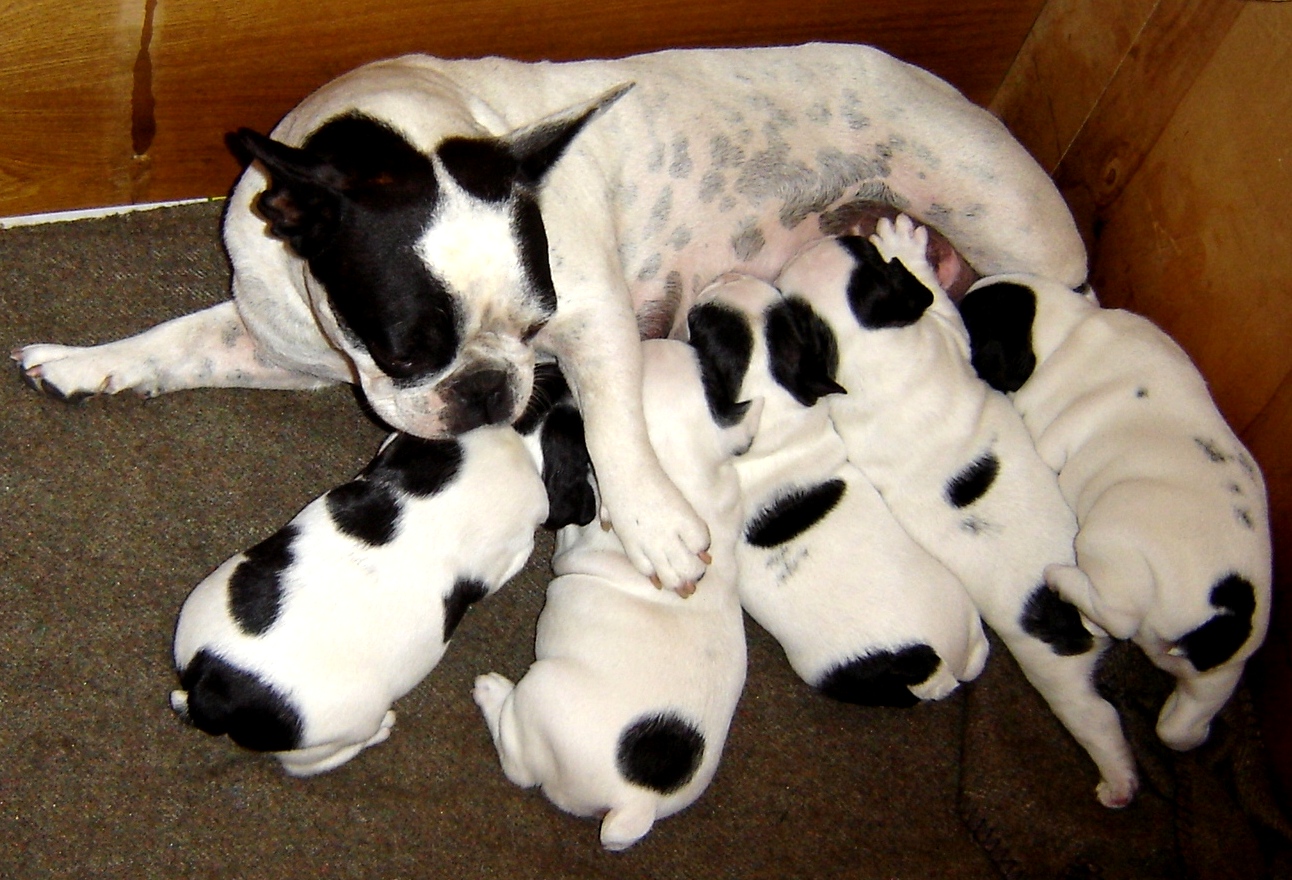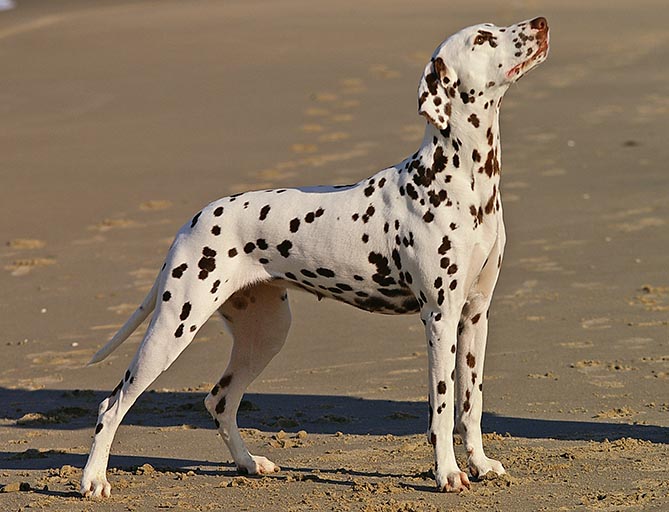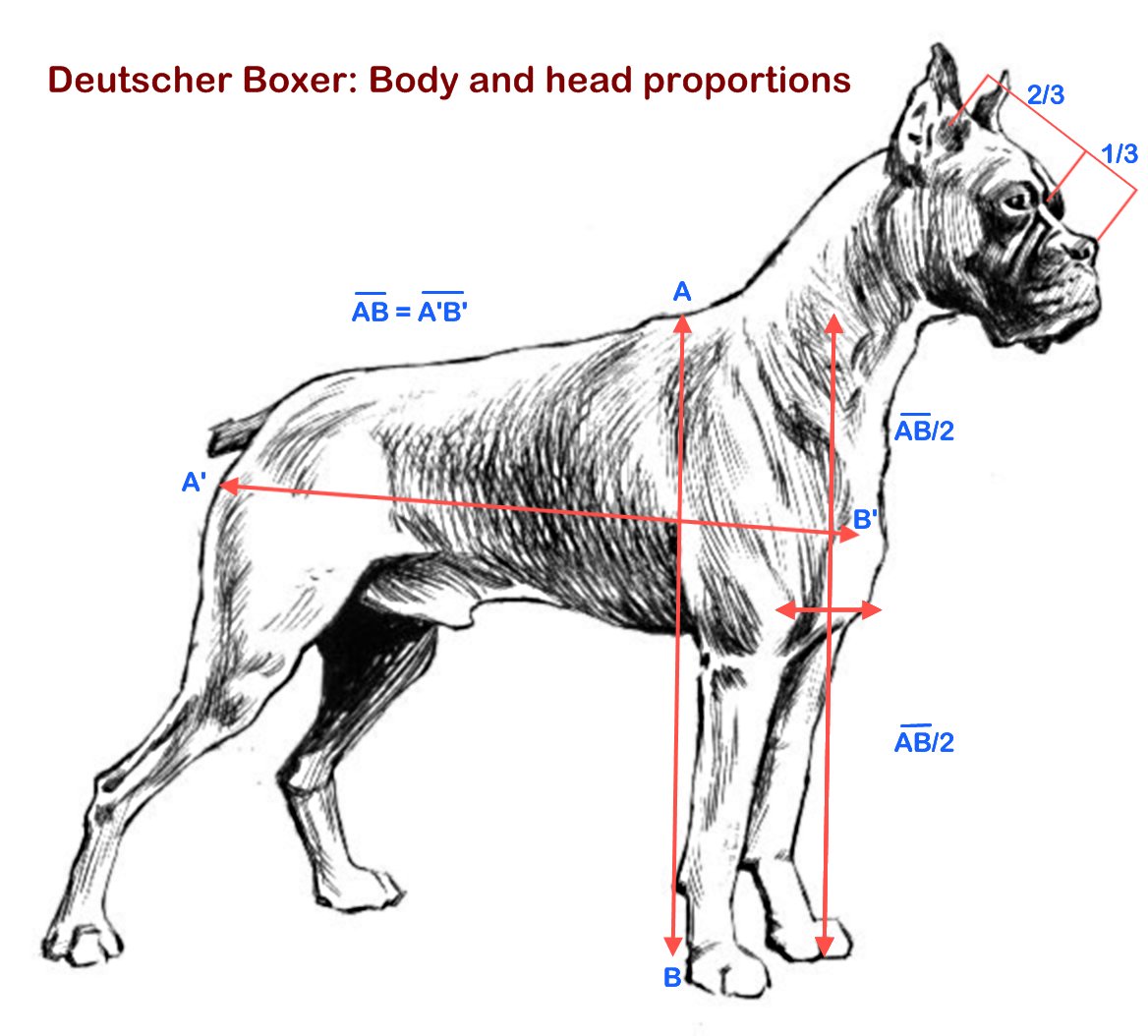|
Fault (breeding)
In animal breed standards, a fault is an aspect of appearance or temperament that is considered detrimental to the breed type of the animal's breed. In dogs, faults have to do with the externally observable qualities of the dog such as appearance, movement, and temperament. Qualities separately tested such as tests for ability in specific work or sports, tests for genetic health, tests for general health or specific inherited disease, or any other specific tests for characteristics that cannot be directly observed are not referred to as ''faults''. Minor faults may or may not have anything to do with the individual dog's ability to work or suitability as a pet. Defining specific faults Faults are formally defined in reference to the breed standard of the specific dog breed, and, due to the extreme variability of the dog ("Phenotypic variation among dog breeds, whether it be in size, shape, or behavior, is greater than for any other animal"), a single set of faults cannot be generic ... [...More Info...] [...Related Items...] OR: [Wikipedia] [Google] [Baidu] |
Breed Standard
In animal husbandry or animal fancy, a breed standard is a description of the characteristics of a hypothetical or ideal example of a breed. The description may include physical or morphological detail, genetic criteria, or criteria of athletic or productive performance. It may also describe faults or deficiencies that would disqualify an animal from registration or from reproduction. The hypothetical ideal example may be called a "breed type". Breed standards are devised by breed associations or breed clubs, not by individuals, and are written to reflect the use or purpose of the species and breed of the animal. Breed standards help define the ideal animal of a breed and provide goals for breeders in improving stock. In essence a breed standard is a blueprint for an animal fit for the function it was bred - i.e. herding, tracking etc. [...More Info...] [...Related Items...] OR: [Wikipedia] [Google] [Baidu] |
Coat (dog)
The coat of the domestic dog refers to the hair that covers its body. Dogs demonstrate a wide range of coat colors, patterns, textures, and lengths. As with other mammals, a dog's fur has many uses, including thermoregulation and protection from cuts or scratches; furthermore, a dog's coat plays an important role in the showing of purebred dogs. Breed standards often include a detailed description of the nature and attributes of that breed's ideal coat. A dog's coat is composed of two layers: a top coat of stiff guard hairs that help repel water and shield from dirt, and an undercoat of soft down hairs, to serve as insulation. Dogs with both under coat and top coat are said to have a ''double coat''. Dogs with a ''single coat'' have a coat composed solely of guard hairs, with little or no downy undercoat. The terms fur and hair are often used interchangeably when describing a dog's coat, however in general, a double coat, like that of the Newfoundland and most livestock g ... [...More Info...] [...Related Items...] OR: [Wikipedia] [Google] [Baidu] |
Dog Anatomy
Dog anatomy comprises the anatomical studies of the visible parts of the body of a domestic dog. Details of structures vary tremendously from breed to breed, more than in any other animal species, wild or domesticated, as dogs are highly variable in height and weight. The smallest known adult dog was a Yorkshire Terrier that stood only at the shoulder, in length along the head and body, and weighed only . The heaviest dog was an English Mastiff named Zorba which weighed . The tallest known adult dog is a Great Dane that stands at the shoulder. Anatomy Source: Muscles The following is a list of the muscles in the dog, along with their origin, insertion, action and innervation. ''Extrinsic muscles of the thoracic limb and related structures:'' Descending superficial pectoral: originates on the first sternebrae and inserts on the greater tubercle of the humerus. It both adducts the limb and also prevents the limb from being abducted during weight bearing. It is innervated b ... [...More Info...] [...Related Items...] OR: [Wikipedia] [Google] [Baidu] |
Dog Breeding
Dog breeding is the practice of mating selected dogs with the intention of maintaining or producing specific qualities and characteristics. When dogs reproduce without such human intervention, their offspring's characteristics are determined by natural selection, while "dog breeding" refers specifically to the artificial selection of dogs, in which dogs are intentionally bred by their owners. Breeding relies on the science of genetics, hence a breeder who is knowledgeable on canine genetics, health, and the intended purpose of the dogs attempts to breed suitable dogs. Terminology The female parent of puppies is referred to as the ''dam'' and the male parent is referred to as the ''sire''. A litter consists of the puppies born from the same pregnancy. A ''whelp'' is a newborn puppy and giving birth to dogs is called ''whelping''. Dogs commonly give birth in a ''whelping box'', a simple box or pen provided to the dam to help shelter and contain the puppies. A person who intenti ... [...More Info...] [...Related Items...] OR: [Wikipedia] [Google] [Baidu] |
Terrier
Terrier (from Latin ''terra'', 'earth') is a type of dog originally bred to hunt vermin. A terrier is a dog of any one of many breeds or landraces of the terrier type, which are typically small, wiry, game, and fearless. Terrier breeds vary greatly in size from just to over 60 kg (132 lb, e.g. Black Russian Terrier) and are usually categorized by size or function. There are five different groups of terrier, with each group having different shapes and sizes. History Most terrier breeds were refined from the older purpose-bred dogs. The gameness of the early hunting terriers was exploited by using them in sporting contests. Initially, terriers competed in events such as clearing a pit of rats. The dog that was fastest in killing all the rats won. In the eighteenth century some terriers were crossed with hounds to improve their hunting, and some with fighting dog breeds to "intensify tenacity and increase courage". Some of the crosses with fighting dogs, bull a ... [...More Info...] [...Related Items...] OR: [Wikipedia] [Google] [Baidu] |
Australian Cattle Dog
The Australian Cattle Dog (ACD), or simply Cattle Dog, is a breed of herding dog originally developed in Australia for droving cattle over long distances across rough terrain. This breed is a medium-sized, short-coated dog that occurs in two main colour forms. It has either red or black hair distributed fairly evenly through a white coat, which gives the appearance of a "red" or "blue" dog. As with dogs from other working breeds, the Australian Cattle Dog is energetic and intelligent with an independent streak. It responds well to structured training, particularly if it is interesting and challenging. It was originally bred to herd by biting, and is known to nip running children. It forms a strong attachment to its owners, and can be protective of them and their possessions. It is easy to groom and maintain, requiring little more than brushing during the shedding period. The most common health problems are deafness and progressive blindness (both hereditary conditions) and a ... [...More Info...] [...Related Items...] OR: [Wikipedia] [Google] [Baidu] |
Working Dog
A working dog is a dog used to perform practical tasks, as opposed to pet or companion dogs. Definitions vary on what a working dog is, they are sometimes described as any dog trained for and employed in meaningful work; other times as any dog whose breed heritage or physical characteristics lend itself to working irrespective of an individual animal's training or employment; and other times again it is used as a synonym for herding dog. Working dog types Roles performed by dogs that sometimes sees them classified as working dogs include: * Assistance dog trained to help a disabled person in some way, such as guiding a visually impaired person, opening doors or alerting to a ringing phone. * Carriage dog historically used to provide protection to carriage passengers or merchandise * Detection dog or sniffer dog, trained to detect for example drugs or land mines. * Draught dog traditionally used to pull dog carts * Guard dog used to protect buildings or livestock * Guide do ... [...More Info...] [...Related Items...] OR: [Wikipedia] [Google] [Baidu] |
Flat-coated Retriever
The Flat-coated Retriever is a gundog breed originating from England. It was developed as a retriever both on land and in the water. Description Appearance The Flat-Coated Retriever breed standard calls for males to be tall at the withers, with a recommended weight of 60–80 lb (27–36 kg), and for females to be , with a recommended weight of 55–75 lb (25–34 kg). The Flat-Coated Retriever has strong muscular jaws and a relatively long muzzle. Its head is unique to the breed and is described as being "of one piece" with a minimal stop and a backskull of about the same length as the muzzle. It has almond-shaped, dark brown eyes with an intelligent, friendly expression. The ears are pendant, relatively small, and lie close to the head. The occiput (the bone at the back of the skull) is not to be accentuated (as it is in setters, for example) with the head flowing smoothly into a well-arched neck. The topline is strong and straight with a ... [...More Info...] [...Related Items...] OR: [Wikipedia] [Google] [Baidu] |
German Shepherd Dog
The German Shepherd or Alsatian is a German breed of working dog of medium to large size. The breed was developed by Max von Stephanitz using various traditional German herding dogs from 1899. It was originally bred as a herding dog, for herding sheep. It has since been used in many other types of work, including disability assistance, search-and-rescue, police work, and warfare. It is commonly kept as a companion dog, and according to the Fédération Cynologique Internationale had the second-highest number of annual registrations in 2013. History During the 1890s, attempts were being made to standardise dog breeds. Dogs were being bred to preserve traits that assisted in their job of herding sheep and protecting their flocks from predators. In Germany this was practised within local communities, where shepherds selected and bred dogs. It was recognised that the breed had the necessary skills for herding sheep, such as intelligence, speed, strength and keen senses o ... [...More Info...] [...Related Items...] OR: [Wikipedia] [Google] [Baidu] |
Dalmatian (dog)
The Dalmatian is a breed of dog, which has a white coat marked with black or brown-colored spots. Originating as a hunting dog, it was also used as a carriage dog in its early days. The origins of this breed can be traced back to present-day Croatia and its historical region of Dalmatia. It is thought that early ancestors of the breed were certain breeds of pointers and a spotted Great Dane. Today, it is a popular family pet and many dog enthusiasts enter Dalmatians into kennel club competitions. Characteristics Body The Dalmatian is a muscular dog with excellent endurance and stamina. When fully grown, according to the American Kennel Club (AKC) breed standard, it stands from tall. Coat Dalmatian puppies are born with plain white coats and their first spots usually appear within 10 days; however, spots may be visible on their skin from birth. They continue to develop until the dog is around 18 months old. Spots usually range in size from 2 to 6 cm (1.25 to 2.5 i ... [...More Info...] [...Related Items...] OR: [Wikipedia] [Google] [Baidu] |
Lap Dog
A lap dog or lapdog is a dog that is both small enough to be held in the arms or lie comfortably on a person's lap and temperamentally predisposed to doing so. ''Lapdog'' is not a specific breed, but a generic term for a type of dog that is small in size and friendly towards humans. Lap dogs historically have been kept in many societies around the world by individuals with the resources to support a non-productive animal, and a lifestyle which allows for much contact with the dog. They are docile companion animals with no working function other than companionship. Genetic analysis reveals that lapdogs are among the earliest specific types of dogs to live with people. Today, most lapdog breeds fall into the ''toy'' breed group. Additionally, the term "lapdog" is also used to refer to a person, organization or country controlled by another who is stronger. Appearance Some lapdogs have been bred for extremes of small size, such as the Russian and Mexican varieties shown below ... [...More Info...] [...Related Items...] OR: [Wikipedia] [Google] [Baidu] |
Breed Type
In animal husbandry or animal fancy, a breed standard is a description of the characteristics of a hypothetical or ideal example of a breed. The description may include physical or morphological detail, genetic criteria, or criteria of athletic or productive performance. It may also describe faults or deficiencies that would disqualify an animal from registration or from reproduction. The hypothetical ideal example may be called a "breed type". Breed standards are devised by breed associations or breed clubs, not by individuals, and are written to reflect the use or purpose of the species and breed of the animal. Breed standards help define the ideal animal of a breed and provide goals for breeders in improving stock. In essence a breed standard is a blueprint for an animal fit for the function it was bred - i.e. herding, tracking etc. [...More Info...] [...Related Items...] OR: [Wikipedia] [Google] [Baidu] |









